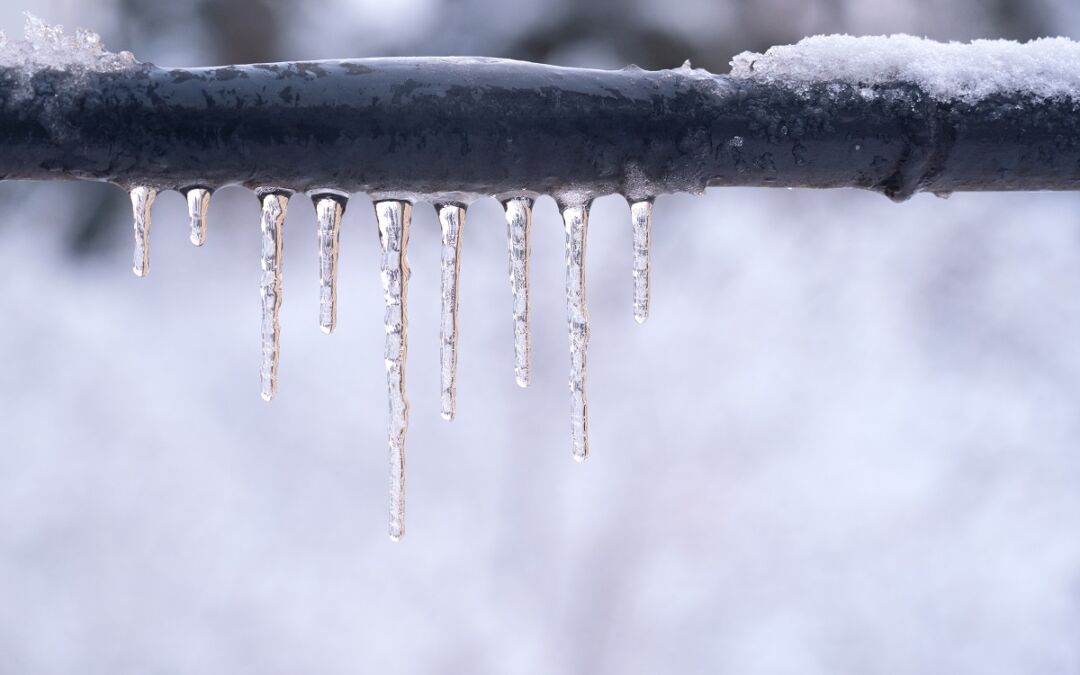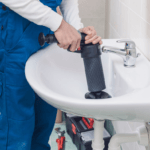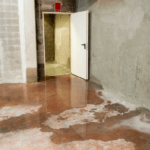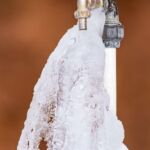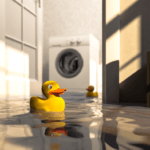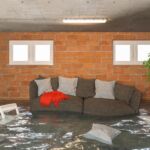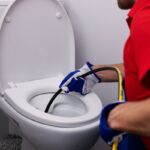If you have frozen pipes, you must act right away because if you do not take the necessary steps, your pipes can remain frozen for days, weeks and sometimes even months. When outside temperatures are below freezing, there is always a risk of your interior pipes freezing, and the longer they remain frozen, the higher the chance of bursting water pipes. You need to eliminate this risk which you can do with the use of a hairdryer, space heater or smart safety system to thaw your frozen pipes.
Frozen pipes can stop your water flow which would prevent you from being able to shower, wash dishes or simply get a glass of water.
Can frozen pipes thaw on their own?
Frozen pipes can thaw naturally once temperatures rise above freezing for a significant length of time, although this process can take a while. If the frozen pipes are underground, the pipe may remain frozen even when temperatures rise above freezing.
If your pipes freeze in the middle of winter, it can take months before temperatures are high enough to thaw your pipes naturally, and this would not only be inconvenient since you can’t draw water from frozen pipes but also highly dangerous because it will increase the risk of burst pipes. Waiting for frozen pipes to thaw on their own is not a good idea because this will not happen until temperatures rise above freezing for several hours and you cannot predict when this will be.
For this reason, it is not recommended that you wait for frozen pipes to thaw on their own because this can increase the risk of burst pipes, and you may experience water damage, flooding and costly plumbing repairs. It is better to take immediate action to thaw your pipes because it can take very long for frozen pipes to thaw naturally, and you cannot wait for this process because of the negative consequences you may face.
How do I know if my pipes are frozen?
You will have little or no water flowing from faucets and showerheads if a water supply pipe has frozen. Frozen pipes can also stop or slow your toilet tank’s ability to refill after flushing. If more than one faucet is non-operational, this may be an indication of a frozen main water supply pipe or multiple frozen pipes. Look for the following signs:
- Reduced water or no water at all coming from faucets or showerheads.
- A toilet tank that fills slowly or doesn’t fill at all.
- A toilet, sink or shower that does not drain.
These signs may indicate a frozen drain pipe, and you will have to act fast because the longer they remain frozen, the more likely they are to burst. You should not wait for this process to happen naturally, as it can take too long, and you will have to deal with damage that can be avoided.
To prevent damage to your home plumbing system, take the following steps to thaw your frozen pipes:
- Find the location of the ice blockage. Follow the pipe from your appliance back to its source and look for areas where frost or beads of water have formed on the exterior of the pipe. This may be an indication of an ice blockage. If you cannot follow pipes because they are enclosed in a wall, crawlspace or finished basement, you can still thaw it and having an exact location will help you concentrate on the right area.
- Apply heat. Exposed pipes are easier to deal with because you can pinpoint an ice blockage and direct a hair dryer, heat lamp or heat gun directly at the ice blockage. You can also try wrapping the pipe with heat tape and plugging it in.
Both of these methods will help thaw frozen exposed pipes in about 30-45 minutes. If you need to thaw pipes enclosed inside walls, you must do the following:
- Turn up your thermostat to increase the temperature in your home.
- Place a space heater in a closed room in which the pipes are frozen.
- Open floor-level cabinets to allow warm air to circulate near the plumbing.
- Heat your basement or attic with a space heater to thaw the pipes in these spaces.
These methods may take several hours, and it is recommended that you contact a professional plumber in these cases because it is harder to find exactly where the ice has formed if frozen pipes are hidden behind walls.
Make sure your pipes do not refreeze
There is a high chance that your pipes will freeze again after this happens once, and you can insulate exposed pipes with self-regulating heat cables wrapped in insulating tape to prevent this from happening. These cables have built-in thermostats that will cause the cable to heat up when temperatures fall too low, which will stop ice from forming in your pipes.
Additionally, you can also increase the temperature in your home to prevent in-wall pipes from freezing, and you can use space heaters to keep specific rooms warm and prevent frozen pipes.
Many homeowners consider pouring hot water down the drain to unfreeze pipes, and this simple solution will work in some situations. Bring water to a boil and add 1 tablespoon of salt to the water. Pour it down the ice-clogged drain carefully and allow anywhere from 5 to 15 minutes for the ice to thaw. Run your faucet and monitor the process to ensure your drain is working properly. This solution can sometimes provide you with a quick fix, but if you don’t see results, you will have to rely on other methods mentioned above, or, you must contact a licensed plumber for professional help.
Choose Tap Tech for Your Plumbing Needs
Are you worried about frozen pipes? Tap Tech is ready to help you with all of your plumbing needs. We will inspect your pipes to ensure they can handle the winter season and will provide you with professional advice regarding frozen pipes and how to thaw them.
We provide our clients with permanent and reliable solutions, and you can contact us at any time to learn more about our plumbing services!

